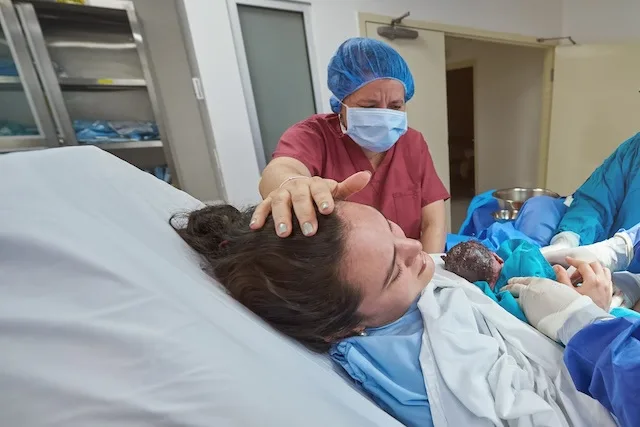Emergency situations in labor and delivery: How labor and delivery nurses respond
A labor and delivery nurse plays a critical role in ensuring the safety and well-being of both mothers and their babies during childbirth. These specialized nurses are trained to handle a wide range of emergency situations, often acting swiftly and decisively to prevent complications.
Here, we’ll explore the various emergency scenarios that can arise during labor and delivery and how labor and delivery nurses respond to these challenges.
Understanding the role of a labor and delivery nurse
A labor and delivery nurse is a registered nurse specializing in providing care to mothers during childbirth. They work in hospitals, birthing centers, and sometimes in home birth settings.
Their responsibilities include monitoring vital signs of both mother and baby, administering medications, providing emotional support, and assisting doctors and midwives during delivery. In emergencies, a labor and delivery nurse is often the first responder, using their expertise to stabilize the situation.
Common emergency situations in labor and delivery
Fetal distress
Fetal distress occurs when the baby is not getting enough oxygen during labor. This can be detected through abnormal heart rate patterns on the fetal monitor. A labor and delivery nurse is trained to recognize these patterns and take immediate action.
They may reposition the mother, administer oxygen, or increase intravenous fluids to improve blood flow to the baby. If these measures are not effective, they will prepare for an emergency delivery, either by vacuum extraction, forceps, or cesarean section.
Umbilical cord prolapse
Umbilical cord prolapse is a rare but serious condition where the umbilical cord slips through the cervix ahead of the baby, cutting off the baby's oxygen supply. When this occurs, a labor and delivery nurse must act quickly to relieve pressure on the cord and maintain oxygen flow to the baby.
This often involves repositioning the mother and manually lifting the baby's head off the cord until an emergency cesarean section can be performed.
Postpartum hemorrhage
Postpartum hemorrhage is excessive bleeding after the child is born and is one of the leading causes of maternal mortality. A labor and delivery nurse is trained to identify signs of hemorrhage, such as a rapid pulse, low blood pressure, and excessive bleeding.
Immediate interventions include uterine massage, administration of medications to contract the uterus, and preparation for potential surgical intervention. Quick and efficient management by nurses can significantly reduce the risk of severe complications.
Shoulder dystocia
Shoulder dystocia is when the baby's shoulders become lodged in the mother's pelvis during delivery. This can cause serious injury to both the mother and baby if not managed promptly.
A labor and delivery nurse is trained in specific maneuvers, such as the McRoberts maneuver or suprapubic pressure, to free the baby's shoulders and facilitate a safe delivery. Their quick response is crucial in preventing long-term damage.
The importance of teamwork and communication
In emergency situations, effective communication and teamwork are vital. A labor and delivery nurse works closely with obstetricians, anesthesiologists, pediatricians, and other healthcare professionals to ensure optimal outcomes for both mother and baby.
Clear and concise communication allows the team to act swiftly and efficiently. Nurses often take the lead in coordinating care, ensuring that everyone is aware of their roles and responsibilities during an emergency.
Training and preparation
A labor and delivery nurse undergoes extensive training to prepare for emergency situations. This includes advanced certifications such as the Neonatal Resuscitation Program (NRP) and Advanced Cardiac Life Support (ACLS).
They also participate in regular simulations and drills to practice their skills in a controlled environment. Continuous education and training ensure that nurses are up to date with the latest protocols and best practices in managing emergencies during labor and delivery.
Providing emotional support
In addition to their technical skills, a labor and delivery nurse provides crucial emotional support to mothers and their families during emergencies. Childbirth can be a stressful and frightening experience, especially when complications arise. Nurses offer reassurance, explain procedures, and provide comfort to help alleviate anxiety and fear. Their compassionate care helps to create a positive birth experience, even in challenging situations.
Labor and delivery nurses are indispensable in managing emergencies during childbirth. Their specialized training, quick thinking, and dedication to patient care ensure the safety and well-being of both mothers and babies. Understanding their role and the challenges they face highlights the importance of these skilled professionals in the labor and delivery process.







